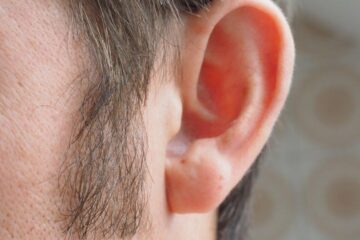Hand protection is paramount in the healthcare sector to safeguard both workers and patients from potential infections and contamination. Healthcare professionals, from doctors and nurses to laboratory technicians and caregivers, depend on protective gear to mitigate the risk of cross-contamination and uphold a sterile environment.
Among the essential tools for hand protection in healthcare settings, nitrile gloves have emerged as a standout solution. Crafted from synthetic rubber composed of acrylonitrile and butadiene, these gloves offer a robust and puncture-resistant barrier against pathogens and hazardous materials. This article will dig deeper into the significance of hand protection in the healthcare sector and explore how it serves as a reliable solution to meet the evolving safety needs of medical professionals.
Advantages of Nitrile Gloves:
1. Allergy-Friendly:
They are hypoallergenic, making them an excellent choice for individuals with latex sensitivities. In contrast to latex gloves, which may induce allergic reactions in certain individuals, they offer a safe and comfortable substitute, guaranteeing that healthcare workers and patients alike can utilise them without worry of allergic responses.
2. Chemical Resistance:
They demonstrate outstanding resistance to various chemicals and solvents, rendering them ideal for handling potentially dangerous substances, including cleaning agents, disinfectants, and medical solutions. Their strong barrier properties shield the wearer’s hands from harmful chemicals, mitigating the likelihood of skin irritation or injury.
3. Strength and Durability:
Celebrated for their robustness and resilience, nitrile gloves provide dependable safeguarding in challenging work settings. Their remarkable resistance to punctures, tears, and abrasions ensures their enduring integrity, even with extended usage. This durability enhances user safety and confidence, allowing healthcare professionals to perform their tasks with peace of mind.
4. Comfort and Flexibility:
Despite their superior strength, they are remarkably comfortable and flexible. They conform to the shape of the hand, providing a snug and comfortable fit that facilitates dexterity and tactile sensitivity. This ergonomic design reduces hand fatigue, allowing healthcare workers to wear the gloves for extended periods without experiencing discomfort. Additionally, their flexibility enables precise movements, which is essential for tasks requiring fine motor skills.
5. Enhanced Sensitivity:
They boast enhanced tactile sensitivity, allowing wearers to maintain precision and control during intricate tasks. Unlike thicker gloves that may impede fine motor skills, they balance protection and sensitivity, making them suitable for various applications, including medical procedures and laboratory work. Their ability to transmit tactile feedback enables healthcare professionals to perform delicate procedures with confidence and accuracy.
6. Resistance to Punctures and Tears:
A standout feature of these gloves is their resistance to punctures and tears. This attribute is particularly crucial in high-risk environments where sharp objects or rough surfaces pose a threat to hand safety. By providing an effective barrier against punctures and tears, they minimise the risk of injury and contamination, ensuring the safety of both healthcare workers and patients.
7. Biocompatibility:
They exhibit biocompatibility, indicating they harmonise with living tissues and elicit no adverse reactions upon skin contact. This makes them suitable for use in medical and clinical settings, where maintaining a sterile environment and minimising the risk of cross-contamination are essential. Healthcare professionals can confidently use these gloves during patient care procedures, knowing that they are safe and effective for prolonged skin contact.
8. Extended Shelf Life:
They have an extended shelf life compared to other types of disposable gloves. Their synthetic rubber composition provides more excellent resistance to degradation from exposure to light, heat, and moisture, ensuring that they remain intact and functional for an extended period. This longer shelf life reduces the need for frequent glove replacements, saving costs and ensuring a reliable glove supply in healthcare facilities.
Nitrile gloves offer a myriad of advantages that position them as a leading choice for hand protection in the healthcare sector. Their allergy-friendly composition, chemical resistance, strength, durability, comfort, flexibility, enhanced sensitivity, and resistance to punctures and tears make them well-suited for various medical applications. As advancements in manufacturing technology continue to improve the quality and performance of these gloves, it is evident that they are poised to play a significant role in the future of hand safety within healthcare settings.




